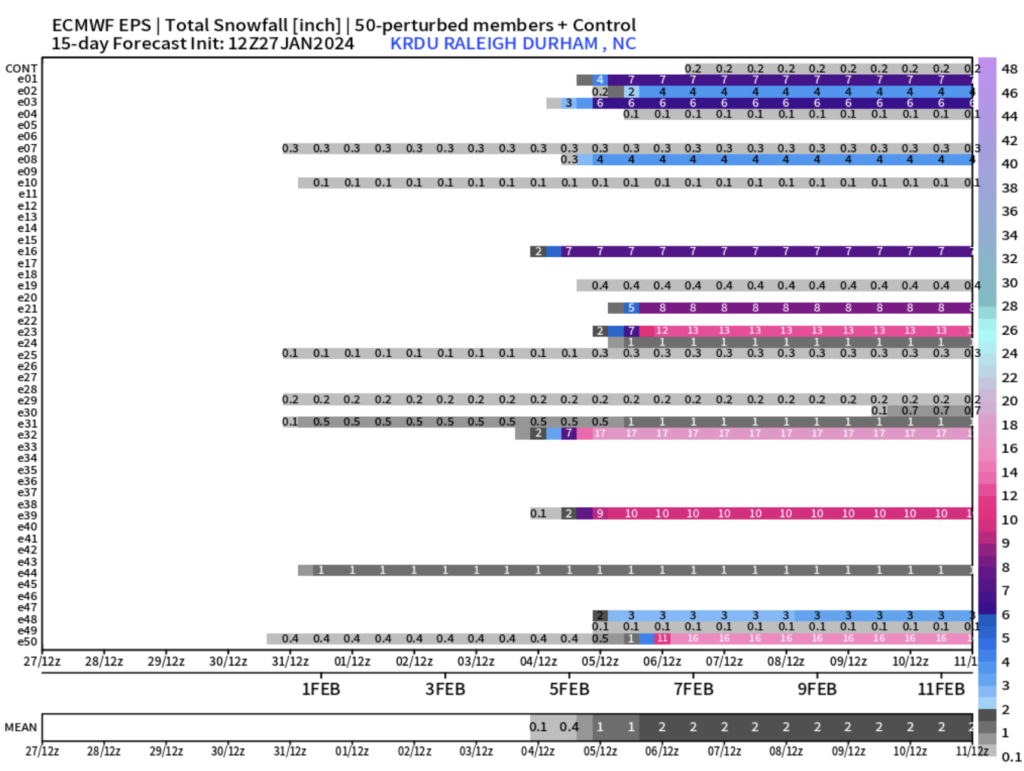
Ok, maybe I’ve actually been excited… for a couple of days.
But I’ve been skeptical and still am cautiously optimistic that another chance for a significant storm will remain in play.
There have been some spectacular runs from the deterministic models over the past couple days (and many bone-dry, tear-jerkers and many cold rains). Now, though, ensemble support is building from the entire suite of global models for winter weather fun in the Carolinas.
I’ll make this update short and sweet… we’re a week or so out, looking at next late Tues/Wed/Thurs. There’s no need to hypothesize any details at this point, as most every cold scenario has potential… Some huge. Some wide-right (= cold and dry). Some wide-left (= cold rain).
In the meantime, we’ll see a bit of a roller coaster with a quite cold today, before warming “all the way up” to the low 50s (which is normal, but will feel semi-tropical in comparison to the extend cold) over the weekend along with rain ahead of the transition to the really cold air first of next week. And there may even be a chance for the elusive cold-air chasing the moisture, such that we get a couple of snow showers Monday.
Enjoy the ride. Hopefully, we enjoy the destination!
And again… ‘I will NOT be excited for snow!’










Recent Comments